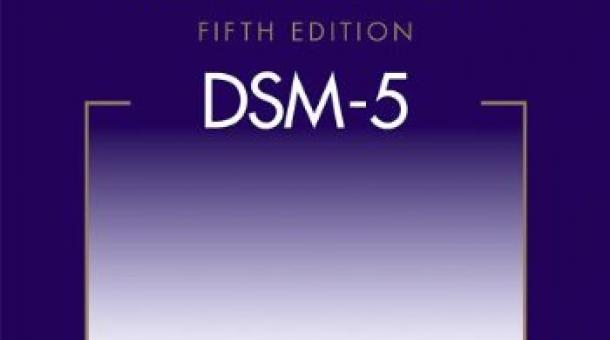You are probably familiar with Social Security Income Disability (SSID), or at least the concept that those aged 65 or older, or those who are blind or disabled, can qualify for disability benefits from the state and/or federal government. But what you may not know is that minor children can also qualify for disability benefits if they suffer from a qualifying disability. Often, these benefits will be provided to the child’s parent or caretaker because the child is unable to care for himself due to age or disabled status.
 As is the case with adults, a child’s disability eligibility and potential benefit amount is determined by a number of factors. These factors include the child’s medical condition, the child’s income (if any), and the family’s income. Once an application is sent to the Social Security Administration it generally takes up to three to five months for the Administration to review and process the disability request. Certain disabilities, however, are eligible for the immediate payment of benefits.
As is the case with adults, a child’s disability eligibility and potential benefit amount is determined by a number of factors. These factors include the child’s medical condition, the child’s income (if any), and the family’s income. Once an application is sent to the Social Security Administration it generally takes up to three to five months for the Administration to review and process the disability request. Certain disabilities, however, are eligible for the immediate payment of benefits.
What Happens When a Disabled Child Turns Eighteen Years Old?
 Indiana Social Security Disability Attorney Blog
Indiana Social Security Disability Attorney Blog




 The DSM, as important as is it, is not updated all that often. The last substantive change to the diagnosis criteria was in 1994, with the DSM-IV. However, just last month, the long-awaited fifth version of the DSM was released, the DSM-V. Chief among the differences between the DSM-IV and the DSM-V is the treatment and definition of many mental health issues.
The DSM, as important as is it, is not updated all that often. The last substantive change to the diagnosis criteria was in 1994, with the DSM-IV. However, just last month, the long-awaited fifth version of the DSM was released, the DSM-V. Chief among the differences between the DSM-IV and the DSM-V is the treatment and definition of many mental health issues. On March 22, 2013, SSA’s new policy interpretation ruling [SSR 13-2p] became effective. This ruling replaced a 31 year old ruling SSR 82-60. The new SSR was based on not only SSA’s existing literature but also on information from medical and legal experts along with the Substance Abuse and Mental Health Services Administration. It is a complex and comprehensive ruling.
On March 22, 2013, SSA’s new policy interpretation ruling [SSR 13-2p] became effective. This ruling replaced a 31 year old ruling SSR 82-60. The new SSR was based on not only SSA’s existing literature but also on information from medical and legal experts along with the Substance Abuse and Mental Health Services Administration. It is a complex and comprehensive ruling. Does a Federal District Court have jurisdiction to review a decision of an Administrative Law Judge’s (ALJ) failure to find “good cause” and thereby allow a late filing for a request for hearing? The answer is generally no. 20 C.F.R. § 404.911 requires that a claimant who files late must show that he/she had “good cause” for missing the filing deadline. Good cause may include such matters as the claimant being seriously ill and therefore not have the ability to contact SSA himself or through a friend or relative; death or serious injury in the claimant’s immediate family; important records destroyed by fire or other accidental cause; could not find the information to support your claim within the time required despite trying very hard; the claimant was given incorrect information about when and how to request a hearing; unusual or unavoidable circumstances that showed the claimant could not have known of the need to timely file or which prevented him from timely filing. These are only a few examples.
Does a Federal District Court have jurisdiction to review a decision of an Administrative Law Judge’s (ALJ) failure to find “good cause” and thereby allow a late filing for a request for hearing? The answer is generally no. 20 C.F.R. § 404.911 requires that a claimant who files late must show that he/she had “good cause” for missing the filing deadline. Good cause may include such matters as the claimant being seriously ill and therefore not have the ability to contact SSA himself or through a friend or relative; death or serious injury in the claimant’s immediate family; important records destroyed by fire or other accidental cause; could not find the information to support your claim within the time required despite trying very hard; the claimant was given incorrect information about when and how to request a hearing; unusual or unavoidable circumstances that showed the claimant could not have known of the need to timely file or which prevented him from timely filing. These are only a few examples. Beginning in late 2011, the Social Security Administration adopted a policy to keep the identity of the Administrative Law Judges assigned to Social Security Disability cases at ODAR a secret until the hearing. The motivation for this rule was an effort on SSA’s part to avoid a claimant declining a National Hearing Center video hearing in order to get a different ALJ. Most attorneys who represent claimants know the ALJs, their preferences and what to expect at the hearings. In order to meet the particular expectations of the judge, to screen for conflicts, to avoid delay, to comply with regulations that require pre-hearing communication directly with the judge, and to know more about what to expect in the hearing, it is necessary to learn the identity of the ALJ.
Beginning in late 2011, the Social Security Administration adopted a policy to keep the identity of the Administrative Law Judges assigned to Social Security Disability cases at ODAR a secret until the hearing. The motivation for this rule was an effort on SSA’s part to avoid a claimant declining a National Hearing Center video hearing in order to get a different ALJ. Most attorneys who represent claimants know the ALJs, their preferences and what to expect at the hearings. In order to meet the particular expectations of the judge, to screen for conflicts, to avoid delay, to comply with regulations that require pre-hearing communication directly with the judge, and to know more about what to expect in the hearing, it is necessary to learn the identity of the ALJ. The Social Security Administration recently issued its Summary of Performance & Financial Information Fiscal Year 2012. In that Summary, SSA wrote that its #1 Strategic Goal was to “Deliver Quality Disability Decisions and Services”. In order to reach that goal, SSA identified 3 strategic objectives: 1.) minimize the average wait time from hearing request to decision; 2.) eliminate the oldest remained pending hearing requests; 3.) minimize the average processing time for initial disability claims; and 4.) achieve a target percentage of the quick disability cases. While these 4 goals are important, the one goal which impacts the disabled the most is the wait time for hearings and final decisions.
The Social Security Administration recently issued its Summary of Performance & Financial Information Fiscal Year 2012. In that Summary, SSA wrote that its #1 Strategic Goal was to “Deliver Quality Disability Decisions and Services”. In order to reach that goal, SSA identified 3 strategic objectives: 1.) minimize the average wait time from hearing request to decision; 2.) eliminate the oldest remained pending hearing requests; 3.) minimize the average processing time for initial disability claims; and 4.) achieve a target percentage of the quick disability cases. While these 4 goals are important, the one goal which impacts the disabled the most is the wait time for hearings and final decisions. Less than a month ago, the Commissioner of Social Security
Less than a month ago, the Commissioner of Social Security 
 As 2013 makes its entrance a number of federal legislative changes affecting disability recipients will take effect. Included among those changes are the thresholds for what is considered “substantial gainful activity”, the maximum amount allowed for a worker retiring at full retirement age, the SSI federal payment standard and the estimated average monthly Social Security Benefits payable in January 2013.
As 2013 makes its entrance a number of federal legislative changes affecting disability recipients will take effect. Included among those changes are the thresholds for what is considered “substantial gainful activity”, the maximum amount allowed for a worker retiring at full retirement age, the SSI federal payment standard and the estimated average monthly Social Security Benefits payable in January 2013. payments effective December 2012. The reason for the increase is due to an increase in the cost-of-living (COLA). Because of this increase, benefits for Social Security disability recipients will increase for 2013. The maximum benefit amount for monthly benefits in 2013 under the SSI program will be $710 for an eligible individual and $1,066 for an eligible individual with an eligible spouse. The maximum benefit amount for monthly benefits in 2013 under the Title II, SSDI program with be $1,132 for a disabled worker and $1,919 for a disabled worker, spouse, and one or more children (with the maximum monthly benefit topping out at $2,533 a month).
payments effective December 2012. The reason for the increase is due to an increase in the cost-of-living (COLA). Because of this increase, benefits for Social Security disability recipients will increase for 2013. The maximum benefit amount for monthly benefits in 2013 under the SSI program will be $710 for an eligible individual and $1,066 for an eligible individual with an eligible spouse. The maximum benefit amount for monthly benefits in 2013 under the Title II, SSDI program with be $1,132 for a disabled worker and $1,919 for a disabled worker, spouse, and one or more children (with the maximum monthly benefit topping out at $2,533 a month).




